I had missed Duxford Battle of Britain airshow for the past two years following the changes to the crowd line and display distances but the promise of 7 hurricanes and 14 spitfires was enough to tempt me back to the former Battle of Britain fighter station. Arriving very early we got one of the last spots by the fence at the Land Warfare centre end which was noticeably busier now the tank bank has been closed off. The flight line looked very impressive headed up by the two Dakota’s then the spitfires, hurricanes, the remainder of the prop aircraft and finally the three jets parked at the far end on the jet pan. The display was opened by the RAF Falcon parachute display team jumping from a leased Canadian Dornier 228 shortly before that the 6 ship Hurricane formation took off to hold ready for their display. Featuring 5 Hurricanes and a Sea Hurricane the formation made several sweeping passes in a three plus three formation.
After recent engine problems with the Merlin engined aircraft the BBMF were able to provide the Lancaster and Hurricane with the spitfire missing on the Sunday.
Losing the Hawk 75 part of the Curtiss-Wright fighter formation due to the strong cross winds, it was left to the Fighter Collection’s P-40C Warhawk to perform an extended and very dynamic solo display. Likewise the Hawker Formation of the Fury and Nimrod was also grounded by the crosswinds.
Keeping in excellent formation despite being buffeted by the strong winds were the nine ship de Havilland Tiger Moths of the Tiger Nine formation team. Formed in 2005 in response to a request for a nine ship fly past at the 25th de Havilland Moth Club rally at Woburn, there are 13 team members in total who all share a passion for this vintage British trainer. Taking the crowd back to the Russian Front was the simulated airfield attack by Lee Proudfoot in the Hispano HA-1112 Buchon complete with pyrotechnic explosions. Coming to the defence were two Yak-3’s flown by Will Greenwood in G-OLEG and Richard Grace in the White 100 Yak who put up a spirited tail chase of the Hispano before it started to trail smoke from one of its engines (nicely simulated of course) and broke off the attack.
Reduced from their usual 8 ship the Great War Display Team put in an excellent display of first world war dogfighting complete with air burst pyrotechnics. Despite their age the circ 1914 aircraft had no issues with the crosswinds electing to take off directly across the grass runway into the wind. Featuring The Junkers CLI and Fokker Dr triplane of the Imperial German Flying Corp versus a Royal Aircraft Factory SE5a and 2 * BE2c’s of the Royal Flying Corp, these impressive machines fill the sky with action during their display.
Sadly the Bristol formation was another victim of the strong winds with just the Blenheim taking to the air. This recent addition to the airshow scene in the unique short nose configuration started off life as a Canadian license built Bolingbroke Blenheim MK IV. Following an accident in 2003 the decision was made to convert it to a short nose Blenheim I using a nose section from another air frame. As usual pilot and Aircraft Restoration Company owner John Romain displayed the aircraft superbly
Whilst the main theme of the show was the Battle of Britain it was nice to see the naval aviation’s contribution recognised. The Navy fighters were represented by the Fighter Collections Corsair alongside Seafire PP972 who flew a formation display before splitting to each perform solos. With no Bearcat on the Sunday it was left to the Air Leasing’s Hawker Fury FBI 1 flown by owner Richard Grace to fill this section with a solo display. It has been accurately painted to represent prototype Fury ‘SR661’, which was a modified Fury Mk.II with a tail hook fitted, but without the folding wings included on subsequent production Sea Fury’s. Closing the Naval section was another unusual pairing with the Catalina seaplane in the colours of the United States Army Air Force’s 8th Air Sea Rescue squadron from Halesworth in Suffolk in a formation take off with the Fighter Collection’s Grumman FM2 Wildcat. The Wildcat flow by Stuff Goldspink then looped around the Catalina as she performed sweeping arches of the airfield.
The Norwegian Air Force Historical Squadron provided the jet section of the show, perhaps an ironic reflection of the current state of the British vintage jet scene. Thankfully the group are big supporters of British airshows, basing their aircraft in the UK during the flying season. The single seat de Havilland Vampire FB.52 and twin seat trainer T.55 started with a mock dog fight with the Russian MiG 15 before a series of formation fly pasts in lieu of any aerobatic manoeuvres which continue to be restricted for jet aircraft under current CAA rules. I did miss most of the display as the Aces High Dakota’s decided to perform its engines run just in front of our position adding considerably to the already strong winds.
Seeing two C47 Dakota’s in formation is an impressive sight but having them fly with a B17 is an incredible and rarely seen sight. The C47 Dakota’s of Aces High and Dakota Heritage’s Drag Em Out both in D Day landing markings formed up with resident B17 Sally B for a unique series of sweeping passes. They were to be joined by a pair of P51 Mustangs as they had done on the Saturday but sadly P51’s Miss Helen and The Shark had a suspected coming together and had to make an emergency landing. Never the less this was an impressive display of 3 heavyweight aircraft from the era.
The high point of the Duxford Battle of Britain airshow was the mass take off of 13 spitfires, very much reminiscent of what must have been a daily occurrence at Duxford and other fighter bases during world war II. Whilst the main formation of 12 aircraft formed up, Air Leasing’s MV268 flown by Steve Jones acted as the joker before the mass formation performed a series of flypasts. They then split into two groups each performing alternate left to right and right to left tail chases filling the sky with spitfires everywhere you looked. A truly impressive sight and sound.
As if 13 spitfires all in the air at once wasn’t enough, the finale to the show was a fitting tribute to the Battle of Britain. This 10 ship formation comprising of the Bristol Blenheim, Gloster Gladiator, three Spitfire Mk la’s and five Hurricanes displaying to the sounds of Nimrod by Elgar. There is no questioning the quantity and quality of aircraft assembled for the Duxford Battle of Britain airshow and Duxford seem to have upped their game (and prices) recently but as an aviation photographer the display distances brought about by the new regulations and Duxford layout and location are still very challenging. Would I return? Maybe but whilst other locations such as Shuttleworth provide a much closer experience I will always chose those over a return to Duxford.






























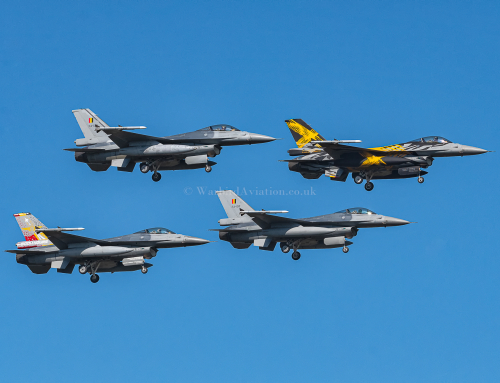
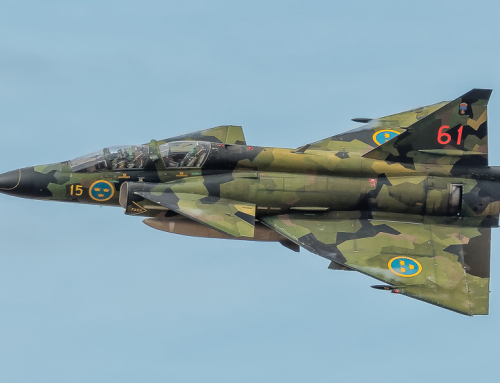
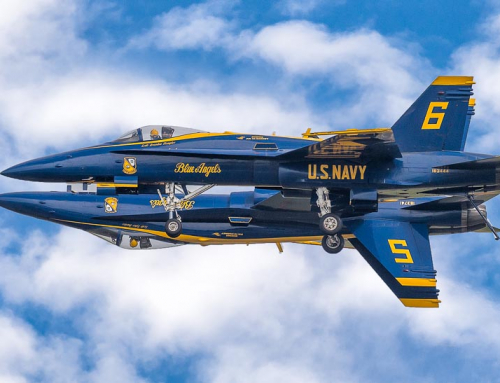
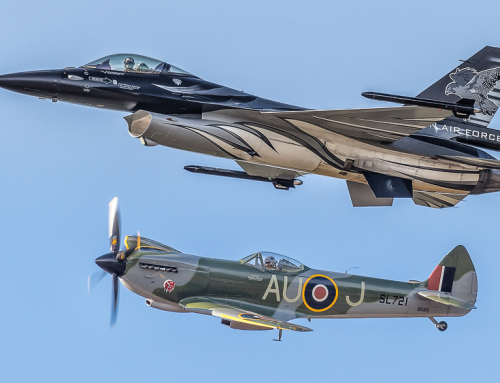
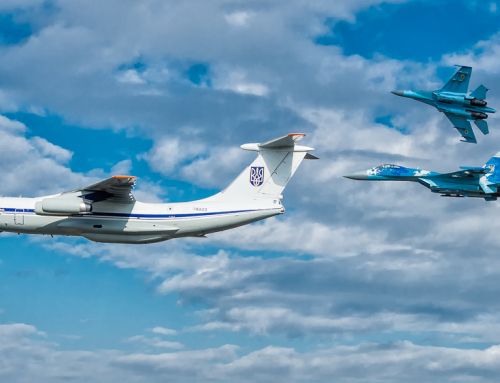
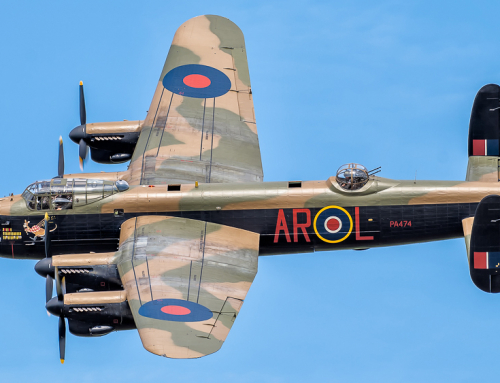
Feel free to add a comment